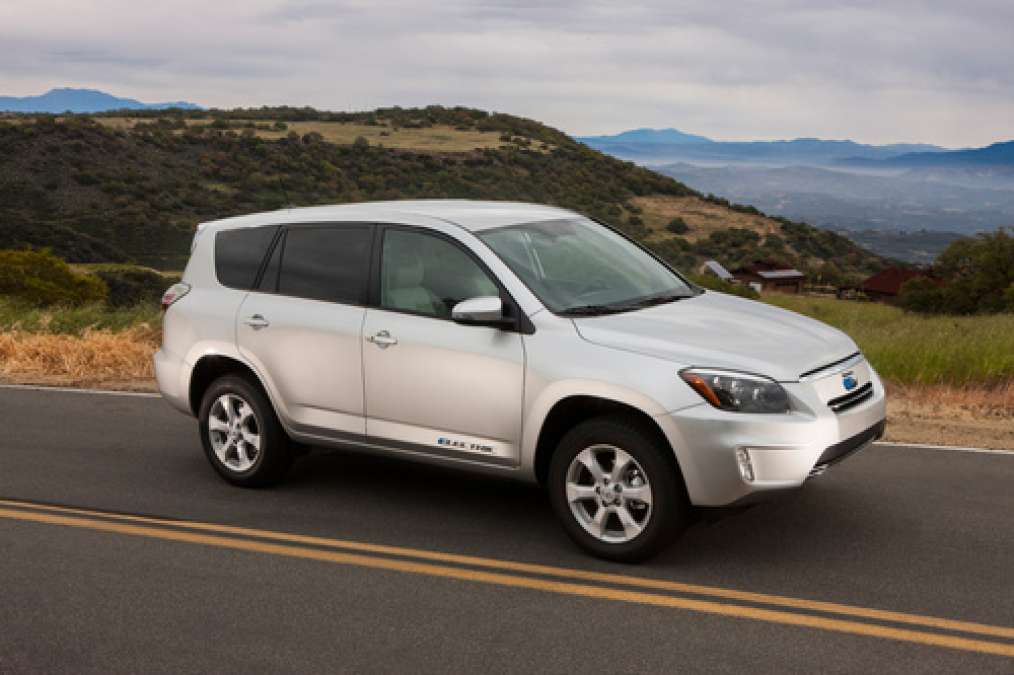The 2012 Toyota RAV4 EV will, when it is introduced this summer, be the first production all electric SUV available on the market. The RAV4 EV is the result of a collaboration between Tesla Motors and Toyota, and features the Toyota RAV4 outfitted with an all electric drive train designed by Tesla Motors. Toyota recently posted a video on YouTube explaining the power saving features of the RAV4 EV meant to extend driving range by making more efficient use of on-board energy.
The video features Sheldon Brown, Executive Program Manager, and in this video he begins with regenerative braking and range anxiety. The Toyota RAV4 EV, of course, has regenerative braking features. This feature does make an electric vehicle a little different than a gasoline car, in that gasoline vehicles cannot increase their range just by driving, while an electric vehicle can. Brown claims the vehicle can recapture 17-24% of the energy through regenerative braking, but without making it clear the driving scenario where that occurs.
This feature works best in downhill driving, but stop-and-go driving presents a large advantage for regenerative braking. That's because every braking event is an opportunity to recover energy. In a gasoline car, braking energy is simply wasted as heat in the brakes, while in an electric car the energy goes into the battery pack.
The exterior lighting on the RAV4 EV was designed for optimum energy use. This includes HID and LED lighting technology. The daytime running lamp (DRL) sees a 78% energy savings through the use of LED's.
The components in the passenger compartment all consume electricity. The heating system on a gasoline vehicle can simply channel waste heat from the engine into the passenger compartment, but in an electric vehicle there isn't much waste heat available. An electric cabin heater might consume 4 kilowatts of energy that is needed instead to move the vehicle. The RAV4 EV has, in addition to the cabin heater, seat heaters that require only 86 watts for a massive energy savings.
In the video the speakers used the phrase "range anxiety" several times. One wonders why the marketing department of an electric vehicle maker wants to reinforce range anxiety in the minds of potential customers. Especially for a vehicle like the Toyota RAV4 EV and its 100 mile estimated electric driving range. All the talk of energy saving features should help to assuage any fears over range anxiety, but why would Toyota play up this fear in the first place? Why not instead issue an educational video going over the facts about driving range needs?
David Herron write about electric cars. Follow David on Twitter at @wwwatts.





